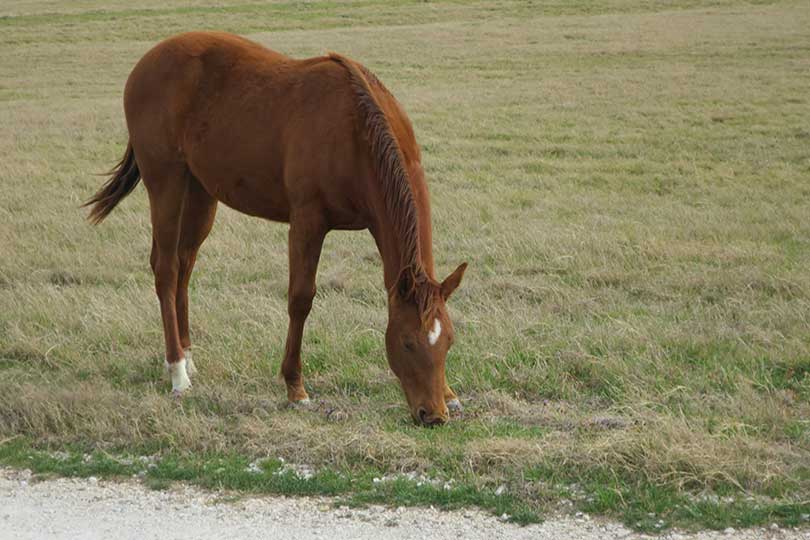This time of year, as temperatures rise, it’s important for horse owners to ensure their livestock receive enough fluids and electrolytes.
“Working and performance horses produce a lot of sweat,” Dr. Bob Judd, host of Texas Vet News on the Texas Farm Bureau (TFB) Radio Network, said. “They not only lose fluid in sweat, but also lose electrolytes.”
Dr. Kathleen Crandell of Kentucky Equine Research reports horses should have access to electrolytes year-round. For those not working hard, loose or block salt may provide sufficient electrolytes.
“The concern with block mineral is the amount the horse consumes may not be sufficient to meet their needs,” Judd said. “Sometimes the blocks are contaminated by the environment—especially if they are placed directly on the ground, which affects the taste and limits consumption.”
For those with performance horses, Judd says a block is not sufficient as an electrolyte source. Daily electrolytes are needed at a much higher level.
The major electrolytes needing to be supplemented are sodium, potassium and chloride.
Although table salt contains both sodium and chloride, it does not contain potassium. Light salt does contain potassium.
“You could add table salt and light salt to your horses’ feed,” Judd said. “The amount of electrolytes your horse needs depends on the level of work. There are certainly numerous electrolyte products on the market to add to your horses’ feed that are flavored to encourage your horse to eat the product.”
According to Judd, many of the products do not contain enough electrolytes to be effective.
“The electrolyte paste we use contains about nine grams of sodium per dose, which is about the same amount of sodium in one tablespoon of table salt,” Judd said.
The commercial paste also contains chloride and potassium as well as minerals calcium, phosphorus and magnesium.
Judd’s program can be heard daily online and on TFB Radio Network affiliates.

